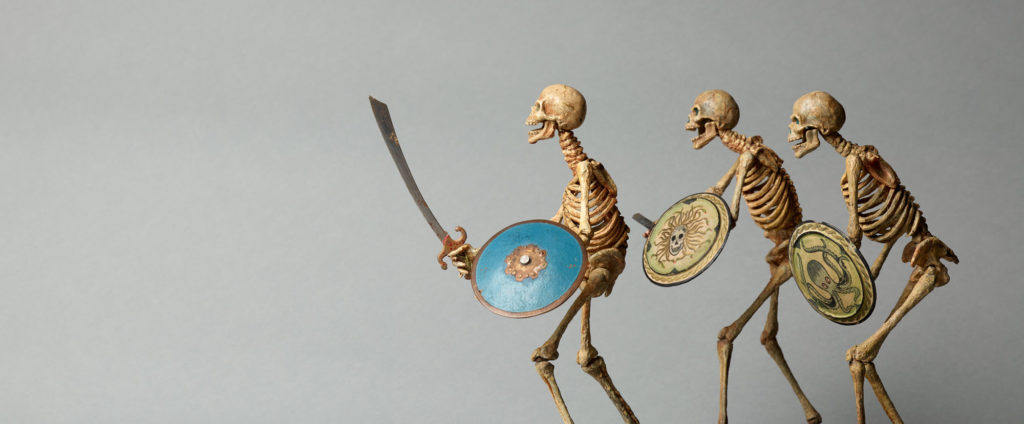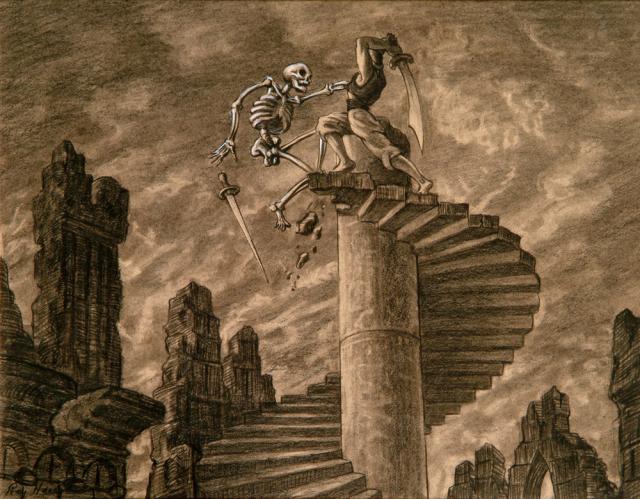Titan of Cinema
October 13, 2021 · 0 comments
By Jonathan Clements.

For anyone in Edinburgh for this week’s Scotland Loves Anime, the sumptuous Ray Harryhausen: Titan of Cinema exhibition traces the animator’s life and work in impressive detail. From his early inspiration from King Kong, through his wartime experiences as a camera assistant under Frank Capra, the multi-room exhibit takes over the entirety of the second building of the Scottish National Gallery of Modern Art, with film clips, ephemera, works in progress at various stages and a walk-in deconstruction of Harryhausen’s Dynamation special-effects process.
His first film as full technical director, The Beast from 20,000 Fathoms (1953), was a plain and obvious influence on Godzilla. But the lovingly curated exhibition wanders through all of Harryhausen’s works, from obscure Puppetoon stop-motion fairy tales, for which he made multiple heads with different expressions, through to his most famous feature work on the Sinbad movies, Jason and the Argonauts and his final film, Clash of the Titans.
It is a fascinating examination of the animation process, from concept art, sketches and storyboards, through armatures and model-making, through to animation, compositing and the way the films were sold. The gift shop also has a nice line in prints of Harryhausen’s concept art, and a site-only edition of the exhibition catalogue.

For those hoping to see the original models of the likes of Medusa and the Kraken, there is plenty on show, although plainly there was more material available, sidelined by modern sensibilities. The captioning in some areas is consciously woke, poking at Sinbad for being “orientalist”, and discreetly refusing to showcase his work on George Pal’s Jasper films. The signage cites the Hollywood Quarterly calling them out for being racist, but equally could have quoted Ebony magazine from the same era, which, while also critical, noted that Pal, as a European filmmaker, was unaware of the implications of some of his film-making choices for American audiences. I, personally, find it more interesting and instructive that such a debate was already taking place in the American media in 1947. I cannot fault the curators for their choices in presentation – the whole point of museums is to re-address the past through contemporary eyes – but wonder if it is a sign of a slippery slope towards future redactions.
One wonders, if in a few years’ time Sinbad, too, with its brown-face casting and mythologised orient, will also be too hot to handle for curators, making it all the more crucial to catch this exhibition now before modern timidities chip away at the content even further, and a committee somewhere starts to wring its hands about the misogyny of Greek myth or animal rights in The Valley of Gwangi.
But for visitors of a certain age, there is little to rival the excitement of getting up close and personal with Bubo, the mechanical owl, and the faded, somewhat moulting figure of the original Pegasus from Clash of the Titans.
Jonathan Clements is the author of Anime: A History. Ray Harryhausen: Titan of Cinema is running at the Scottish National Gallery of Modern Art (Two) on Belford Road in Edinburgh until February 2022.
Leave a Reply